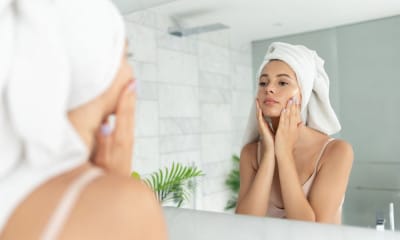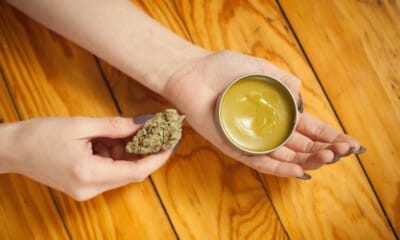Changing Perceptions about Parabens
Have you ever wondered about parabens? This question was posed to a friend, a barista, and my dad. They all had similar responses along the lines of, “I don’t know exactly what they are, but I’ve heard they are present in beauty products and are harmful.”
Although they couldn’t provide a detailed explanation of these chemicals, the prevailing negative attitude towards them hints at the influence clean beauty advocates have had on our views. The label “paraben-free” has become a sign for consumers that the product they are considering is better formulated and safer compared to those containing parabens. However, most cosmetic chemists roll their eyes at the demonization of parabens as there is no concrete evidence demonstrating that these preservatives pose more than an allergic reaction risk.
Kevin Phifer, a cosmetic research scientist with almost four decades of experience, notes, “Because consumers simply believe parabens are harmful, companies are compelled to remove them.”
The widespread fear of parabens has led to a convoluted and fruitless journey for consumers and chemists. For instance, two common paraben substitutes—methylisothiazolinone (MIT) and methylchloroisothiazolinone (CMIT)—are far from gentle.
Conversely, some brands may under-preserve their products, leading to issues like mold growth and product spoilage. Meanwhile, other brands raise product prices to offset the expense of using alternative preservatives that do not contain parabens, leading to unnecessary cost hikes.
The Misrepresentation of Parabens
In 1998, studies conducted on petri dishes and rats—not humans—suggested that some parabens might weakly mimic hormones. Subsequent research in 2004 found parabens in the tumors of women with breast cancer. This study was quickly discredited due to its small sample size and lack of a control group, but the initial correlation spread rapidly.
Kevin Phifer clarifies, “The study did not establish that parabens caused the tumors or any harm; it merely identified the presence of parabens.” The dissemination of this information caused public alarm, leading to a surge in searches for “paraben-free” products from 2004 onwards.
Despite laboratory studies suggesting a link between parabens and hormone disruption or cancer, no concrete findings have been reported on humans. Dr. Robert W. Carlson, an oncologist, emphasizes the need for further research to determine the actual risk of parabens on humans.
“Parabens are completely fine and safe to use. In fact, they’re really great preservatives. The reason we moved away from them was because of consumer perception.” —Desiree Stordahl
A comprehensive 2019 review of over 150 studies on parabens concluded that there is no significant biological evidence linking parabens with hormone disruption, breast cancer, or skin cancer. The American Cancer Society concurs, stating that there is no current epidemiological proof of parabens increasing breast cancer risk.
Chemists have also developed strategies to prevent parabens from penetrating the skin by using larger molecules. However, many brands refrain from using parabens due to consumer resistance.
Merrady Wickes of Crème Collective notes the pervasive consumer demand for paraben-free products, prompting brands to proudly advertise this fact despite it being implicit in their formulations.
“There is no current epidemiological evidence that parabens increase breast cancer risk.”—The American Cancer Society
To address skin allergy concerns related to parabens, dermatologist Dr. Marisa Garshick emphasizes the importance of avoiding irritants in skincare products, especially for individuals with sensitive skin.
Examining Paraben Substitutes
Once parabens fell out of favor in public opinion, brands turned to alternative preservatives. Some adopted natural options like benzoic acid and sorbic acid, which are considered organic but require high concentrations and additional preservatives to be effective, making formulations pricier.
Other brands, such as Paula’s Choice, transitioned to phenoxyethanol, a synthetic preservative proven safe but linked to potential nervous system effects in infants and cancer in rats after extensive exposure. However, its skin irritation risks are minimal, and EU regulators consider it safe at concentrations below 1%.
MIT and CMIT gained popularity in the early 2010s due to their efficacy and shelf life-extending properties.
Effective preservatives such as methylisothiazolinone (MIT) and chloromethylisothiazolinone (CMIT) are powerful against various microbes like yeast and bacteria, allowing for their use in low concentrations, which is cost-effective. However, these preservatives can also be harsh irritants and may lead to allergic reactions more frequently than other preservatives like parabens. All preservatives carry a risk of causing allergic contact dermatitis, showing symptoms like itching, rash, hyperpigmentation, cracked skin, bumps, blisters, swelling, burning, or tenderness. MIT allergies peaked in Europe between 2013 and 2014, with MIT being recognized as the Contact Allergen of the Year in 2013 by the American Contact Dermatitis Society.
According to 2019 data from the North American Contact Dermatitis Group, the percentage of individuals allergic to parabens ranges from 0.5 to 3.7, whereas allergies to methylisothiazolinone were reported to be as high as 13.4 percent. Dr. Garshick notes that interpreting these numbers can be challenging because removing parabens from products reduces sensitization and exposure. Consequently, as MIT and CMIT become more prevalent in skincare products, more people are developing or becoming aware of allergies to these preservatives.
Patch testing is a common method for identifying allergies, as experienced by Thom Watson, a marketing director for a skincare marketplace. Through this testing, Watson discovered his allergy to MIT and CMIT. A dermatologist identified his allergy to these preservatives, leading to intense itchiness and painful welts.
While preservatives are intended to eliminate harmful microbes in products, they can disrupt the skin’s microbiome and barrier, causing irritation. Using overly strong or irritating products can weaken the skin barrier, making it more susceptible to infections. Additionally, inadequate preservation in products can result in mold, yeast, and bacterial growth, potentially leading to infections and skin issues like breakouts.
Some brands may opt to under-preserve their products to avoid preservatives, resulting in short shelf lives and potential spoilage. This can pose risks such as infections and skin concerns, emphasizing the importance of an effective preservative system.
Contrary to the belief that all-natural ingredients are inherently good and synthetic ones are bad, the push for “paraben-free” products may not always be beneficial. This trend stems from aesthetic preferences rather than actual benefits, leading consumers to seek long-lasting products without parabens without considering potential consequences.
Ultimately, the fear surrounding parabens has led to solutions that may not address significant issues. The primary known risk associated with parabens is skin allergies, similar to other allergens where individuals typically choose to avoid the specific ingredient rather than campaign for global bans. It is essential to recognize that every ingredient carries trade-offs, with both risks and benefits to consider in skincare choices.
















